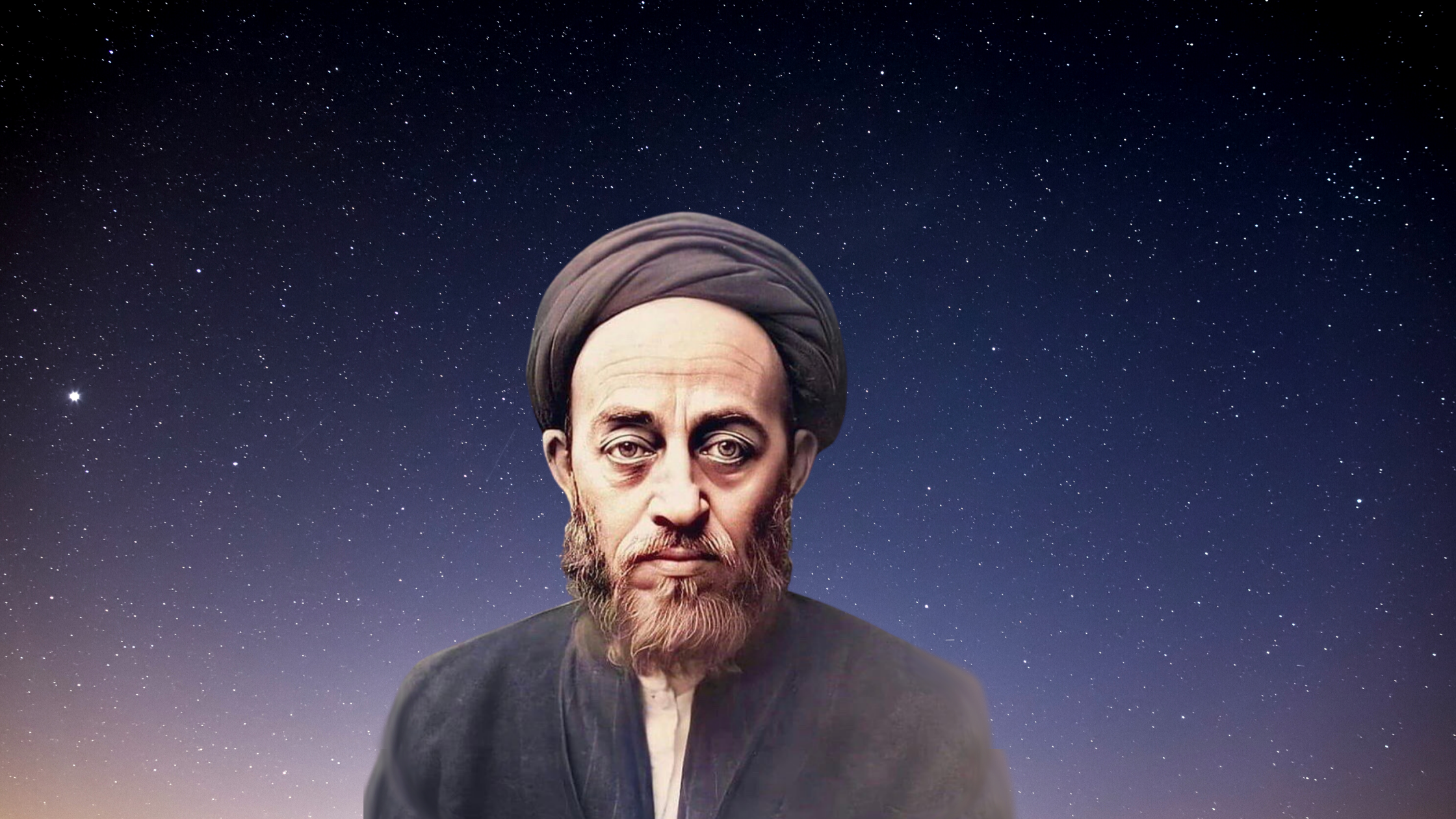First, we must realize that there are numerous approaches to Qur’anic tafsīr (commentary, interpretation, exegesis). Each method has its own strengths, limitations and followers. As students of the Qur’an, we must have an appreciation for diversity and plurality of opinion, though we may favor one view or method over another. When it comes to content analysis—as in the case of a scripture—we need to define clear units of meaning, and prioritize the weight we give to each. This enables us to decode the meaning in a structured and consistent manner, though it also sets limits on our interpretation at the same time. Our assumptions and priorities help us zoom on certain aspects of the text, but they also impede us from engaging with other aspects of it. That is inevitable.
The method of ʿAllāmah Ṭabāṭabāʾī is commonly known as “interpreting the Qur’an with the Qur’an” (tafsīr al-Qurʾān bil-Qurʾān). This itself can be done in many ways. The author’s approach can more accurately be described as a contextual commentary of the Qur’an. In interpreting the verses and favoring one meaning over another, the author primarily relies on the siyāq (context, theme) of the verses—a word which has appeared around 2,100 times in al-Mīzān. He divides every chapter (sūrah) into several sets of verses (āyāt, sing. āyah) which follow a common theme. The internal themes in each sūrah serve the general theme of the sūrah as a whole.
This reveals an underlying assumption in the author’s work. He approaches the Qur’an with the assumption that every verse is connected to the verse before it and the verse after it. Thus, a verse should not be viewed independently, but it must be assessed in the context of its previous and subsequent verses. Furthermore, each chapter of the Qur’an has a unifying theme that runs throughout the chapter, and is pursued by its verses. This may be less applicable to the lengthy chapters at the beginning of the Qur’an, but the author would certainly apply it to the shorter chapters toward the end.
What matters the most to ʿAllāmah Ṭabāṭabāʾī is the immediate context of the verses. This can be contrasted with a slightly different method of interpreting the Qur’an with the Qur’an that is found in the works of a prominent and prolific student of his, Jawādī Āmulī—who considers himself to be a follower of the ʿAllāmah’s school of tafsīr, and who gives all the credit to his late teacher. In Jawādī Āmulī’s approach, a verse is viewed less in the mirror of its surrounding verses, and more in the mirror of the Qur’an as a whole. In other words, in comparison to one another, ʿAllāmah Ṭabāṭabāʾī has a more local assessment of the verse, while Jawādī Āmulī has a more global approach.
Nevertheless, what we can learn from either scholar is how to fish. As we study al-Mīzān, it is instrumental to infer the author’s methodology so that we can apply it to any verse that we read on our own. One reason behind the author’s brevity and lack of repetition in many places is that he did not want his readers to become too dependent on his authority, but wanted them to become independent thinkers who can stand on their own feet. There is a limit to spoon-feeding in education, especially for a book that constantly endorses the pursuit of knowledge, contemplation and reasoning. “One repays a teacher badly if one always remains a pupil only.”
ʿAllāmah Ṭabāṭabāʾī goes through each chapter verse-by-verse. He tackles each verse by first defining its vocabulary and linguistics. He commonly uses al-Rāghib’s al-Mufradāt, al-Ṭabrisī’s Majmaʿ al-bayān and al-Zamakhsharī’s al-Kashshāf as his lexicons. What is often missing in is linguistic discussions is the Qur’anic usage of the terms, which can be vital in discerning the most primary meaning of the verse. In terms of linguistics, he is very sensitive about the conjunctions at the beginning of the verses or phrases, which serve as connections and transitions between different elements of the speech. This is at the very core of his method, which hinges on discovering the common thread that runs through the verses. That is why he never fails to discuss words such as “and” (letter wāw), “or” (aw, am), “therefore” (letter fāʾ), “then” (thumma), “rather” (bal), “but” (lākinna), “except” (illā), “nay” (kallā), and “when” (idh, idhā).
While these subtle technicalities may not be of interest to many readers, they factor significantly in the author’s basis for preferring one meaning over another. Readers who wish to get more engaged with al-Mīzān and appreciate the author’s method should not shy away from these discussions. They are neither trivial nor a marginal part of al-Mīzān. In volume 39, most of these discussions have been moved to a footnote, marked by (Auth.). This was done to make the text more fluent, coherent and readable for the average English audience.
The author also presents the views of other exegetes under each verse, with a short comment on their strength. Again, his main criterion for accepting or rejecting a view is the siyāq (context, theme) of the verses. This, to some extent, requires an intimate relationship with the Qur’an which can only be built through persistent study and contemplation. One can develop a concrete sense for the main message and tone of the verses through constant exposure to them in a structured way. The author’s structured approach is to look for the main aim of the chapter, which is always laid out in the opening verses. The rest is much like domino: all the verses in the chapter are assumed to pursue that theme; hence, they are interpreted in a way that can be reduced to the original message. One of the students of the ʿAllāmah wrote:
“The primary advantage of al-Mīzān over other commentaries is that it explains the verses of the Qur’an with the help of the other verses… Rather, the entire Qur’an resembles one speech, delivered by a single speaker, and any two of its sentences could explain and relate to each other. Thus, if there is an ambiguity in the meaning of a verse, it will be clarified by referring to the other verses on that topic or similar topics. This tafsīr aims at obtaining the meaning of the Qur’an from the Qur’an before anything else, and sets that as basis. Then, according to that basis, it assesses the plausibility of the other meanings proposed by the external sources. This is exactly the opposite of the approach where one sets his own impression of the meaning of the verses as basis and then tries to mold the Qur’an to one’s own ideas.”
Another element of the author’s structured methodology is to separate his interpretation of the verses from his examination of the narrations. This is a crucial lesson to learn from al-Mīzān, which is unfortunately not practiced—nor even acknowledged—among most scholars and students in the traditional seminaries. The key here to having a holistic view, without compromising any value, is to realize that there are several layers of meaning and application for the verses. This opens one up to multiple interpretations, each of which can be true in its place. It also calls for a standard to prioritize the suggested meanings. In the author’s view, every verse has a primary or apparent meaning (ẓāhir) which can be deduced from Qur’anic evidence alone. Everything else, though significant or mystical, is secondary compared to that. The primary meaning is like a recipe or manual which can be applied to a diverse set of external events according to their social circumstances and historical contexts. This is the role of almost all narrations that interpret the verses of the Qur’an: they do not offer the primary meaning of a verse, but they offer a specific application of the verse, without confining the verse to that particular instance. This is also called the principle of the “flow” of the Qur’an. The same can be said about historical accounts which define the causes or contexts of revelation of the verses (asbāb al-nuzūl).
This is the author’s theory of “application and matching” (jary wa inṭibāq or taṭbīq), which stipulates that the Qur’an is not limited to a specific point in time and space, and its verses are not confined by the context of their revelation. Rather, the verses can be extended to circumstances beyond the original setting in which they were revealed. The author has deduced this from some pivotal narrations which say that the Qur’an “flows” (yajrī) like the flowing of the night, the day, the sun and the moon; and has applications for both the living and the dead. Just as there is an incessant regeneration of night and day; just as the heavenly bodies keep moving in their orbits and shining light on the earth; the Qur’an also continues to have a message and application for new generations and circumstances.
Continues…..
Tawus Raja (Translator).
Note: This foreword was written by Tawus Raja in English volume 39 and readers can refer to the rest of the text in that volume.





